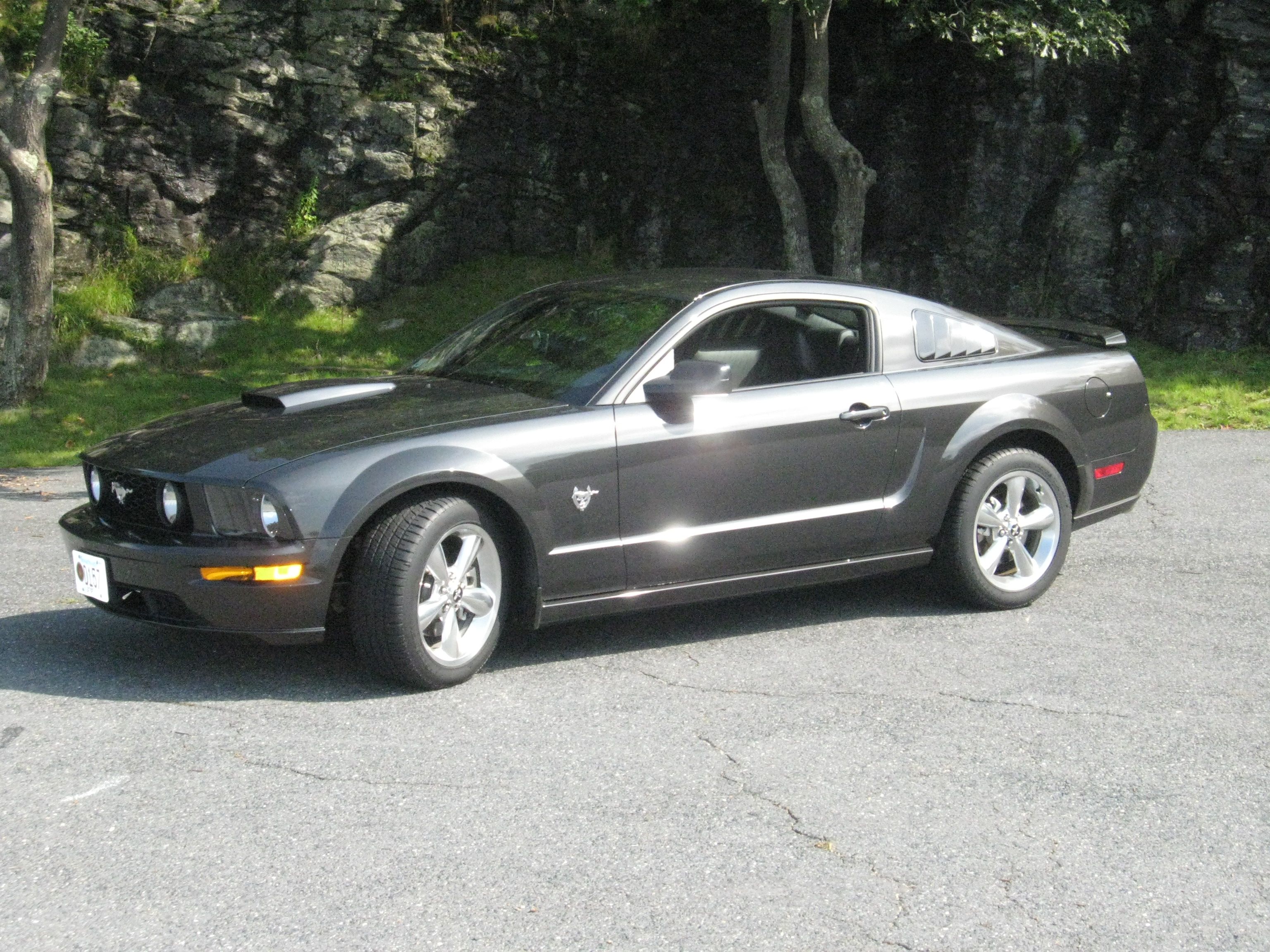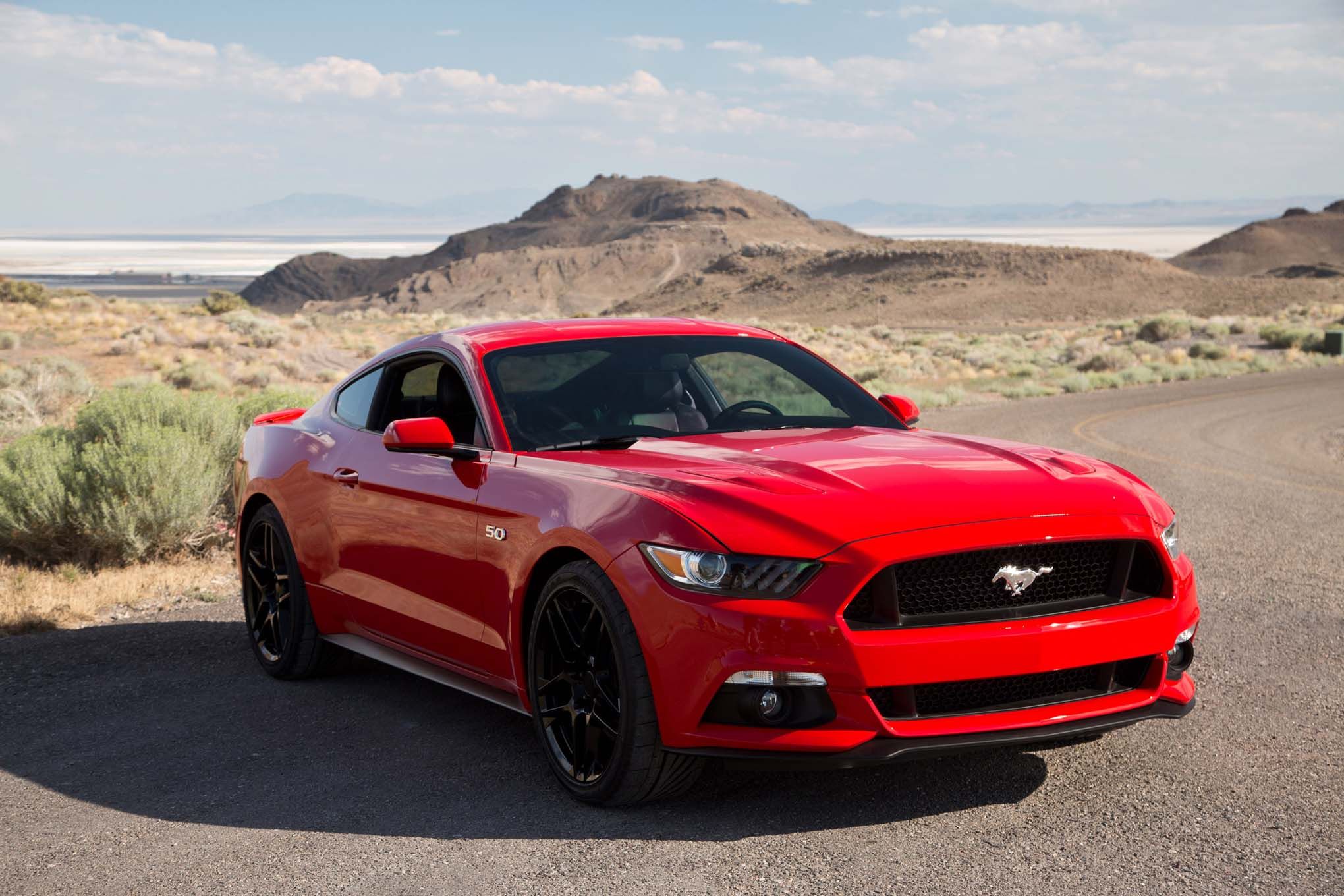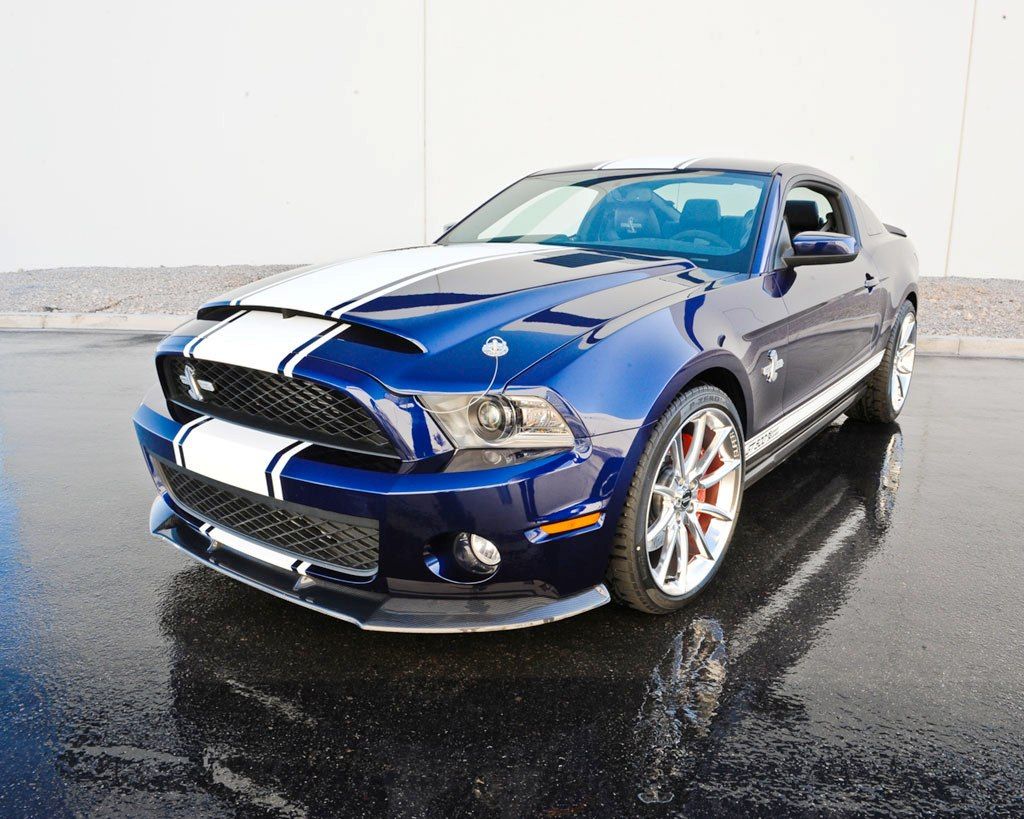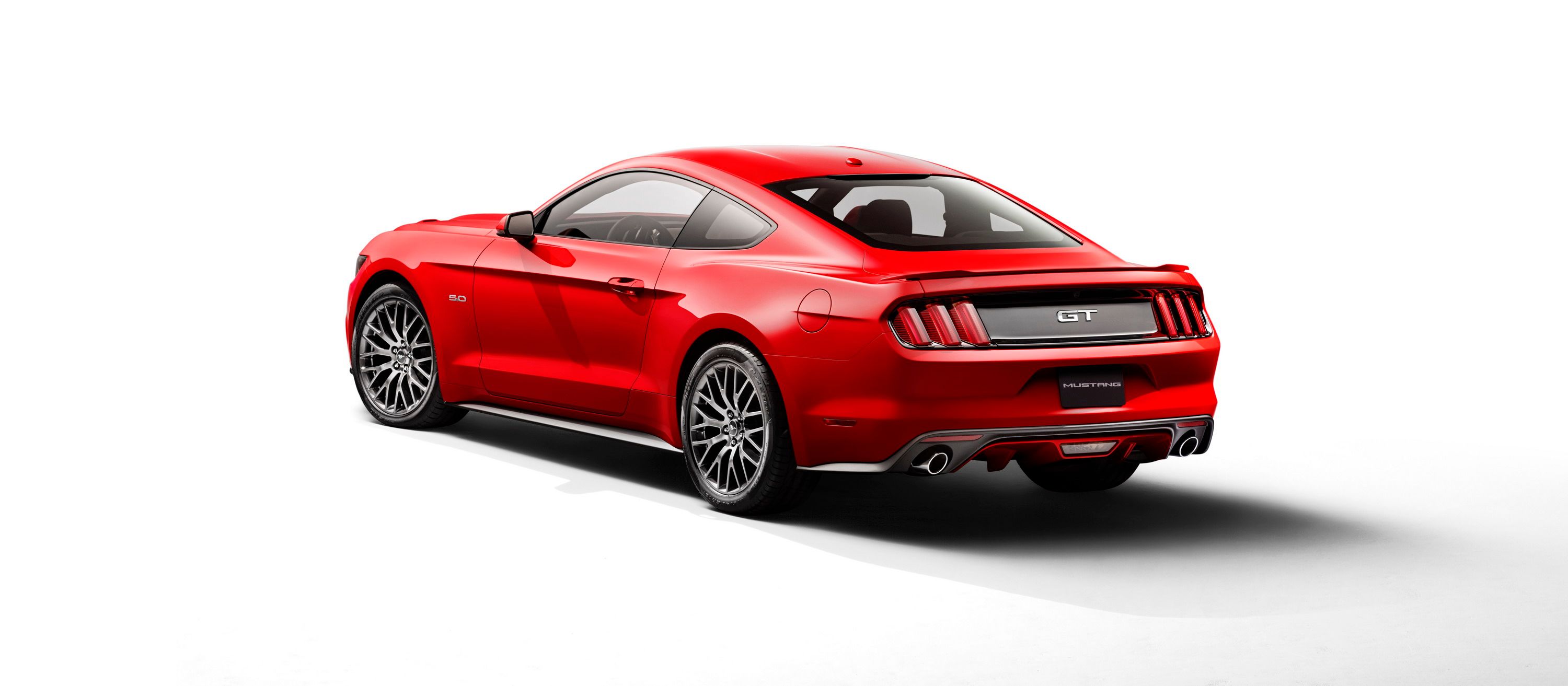How would you feel about spending half the cost of a 2015 Mustang GT on a slightly older Mustang->ke428 that runs more than a full second quicker in the quarter-mile? How about an 11-second car that won't lose a third of its value the first time you drive it, and will save you the cost of a decent 1990 Mustang GT every single year in insurance and financing costs alone? Sounds about perfect, right? One small caveat:
"Some assembly required."
The world would be a wonderful place if we could all afford to plunk down $40,000 to close to $50,000 on the latest and greatest Mustang. But here in the real world of potholes and mosquitoes, budget limitations do have a habit of slapping those ambitious prayers from our mouths. That's okay, though. Because to paraphrase a certain country singer: Some of life's greatest gifts are unanswered prayers. The rest are half-priced Shelby GT500->ke1359 "clones."
The new-for-2015 Mustang, code-named S550, is an objectively significant improvement over the "old" S197 chassis. Noticeably lower, wider and smoother-handling than its predecessor, and with 435 horses to boot, the S550 does seem well-tailored for epic battle with them Chivvy->ke199 boys. It's a great car -- just not as great as the previous-generation Shelby GT500, or even a "clone" version of the same.
S197 vs S550 Chassis and Suspension
Measurement for measurement, these two cars share very little in common, apart from a 107-inch wheelbase. The newer car is 0.2 inch longer, 1.5 inches wider and 1.2 inches lower than its predecessor. The S550 is also 50 to 100 pounds heavier, but to its credit at least carries its weight low in the chassis. Aerodynamically, the two cars are almost in different leagues; the older car is taller and boxier, while the newer one is shorter and sleeker.
By far the biggest difference between the two lay out back. For this generation, Ford->ke31 moved to mandatory independent suspension on all models. While IRS does provide some benefit on the race track in terms of controlling wheel movement with softer suspension, the main reason behind the move had to do with ride comfort. Because IRS systems reduce unsprung weight, thus allowing the wheel to respond to road imperfections faster, an IRS car can get away with a much softer suspension while maintaining the same level of cornering grip.
So if you're going to beat the new Mustang's computers with an old Mustang chassis, you're going to need a lot more traction, a lot more horsepower, or preferably both. Looks like it's time to set those sights a little higher.
The GT500
Most Mustang enthusiasts remember the Shelby GT500 -- how could anyone forget it? Introduced in 2006, the GT500 initially came with a 500-horsepower, supercharged 5.4-liter modular engine. By 2011, horsepower was up to 550, and weight was down slightly to 3,820 pounds. That's just a hair off of the new Mustang's curb weight, making this a pretty fair comparison. The GT500's performance specs:
0 to 60 -- 4.4 seconds
Quarter-mile -- 12.4 seconds at 116 mph
In other words: a pretty comfortable 0.3 second faster to 60 mph, and 0.6 second faster through the quarter-mile, with a crushing 5 mph higher trap speed. That's horsepower, baby. And even more impressively, that time is also on rear 20-inch rims with low-profile, 35-series tires -- a long way from ideal for the drag strip. Slap on a set of more reasonable 18-inch rims and a set of respectable 50-series street drag radials, and you could easily cut about 0.5 second off the GT500's time both to 60 mph and down the quarter mile. No matter how you look at it, 550 horses plus a bit more traction makes this an easy walk for the S197 Mustang.
Now, where to get that 550 horsepower...
Build Recipe
For this budget GT-beater, we're going to look at "cloning" a GT500 with an older chassis. Of course, unless you've got the money to spend on cosmetics, brake upgrades and suspension, it won't be a "real" clone (there's your contradiction in terms for the day). A used 2011 GT500 still costs about as much as a new Performance Pack GT, and you'll probably spend every bit of that full-on cloning one part-for-part. Nothing Shelby->ke81 is cheap, and a 5.4-liter engine swap won't save you much either.
But starting from a slightly older Mustang and adding a few name-brand aftermarket performance parts, you can at least more or less "clone" the GT500's performance. Here's the recipe:
2009 Mustang GT -- Average low-end price on Autotrader, about $16,000
Roush Phase 2 Supercharger Kit -- $7,000, complete with everything need for installation.
A set of 18-inch rims -- Probably free if you know where to look; otherwise, maybe $800 for a decent aftermarket set.
Tires -- about $250 for both fronts, and $450 for a pair of rear drag radials
TOTAL -- $24,500 in car and parts.
No, that's not technically half the new Mustang Performance Pack's $40,000 MSRP; but nobody pays MSRP. It's the "suggested" retail price for a reason. After additional options, dealer costs, financing costs, delivery costs, undercoating and headlight bearings, you'll be well near or over $50,000 total for a new GT. Significantly over that, at the 1.9 percent rate Ford's offering on its 48-month finance plan right now. So, yes, this "Shelby clone" should come in at about half the total layout for a new Performance Pack Mustang.
The good news about Roush's kit is that it's extremely well thought-out; Roush and Ford have been like peas and carrots for a long time now, and Roush->ke1434 is the name brand in Mustang performance (after Shelby). Roush's kit includes everything from two new 60 mm throttle bodies to a 110 mm MAF sensor, fuel system and injector upgrades, an intercooler system and even the computer tune you'll need to make it all work. The words "complete kit" don't seem to quite do this one justice.
(For the record: No, TopSpeed hasn't recently started shilling for Roush. They just really are that good.)
If you've got a bit of experience, this installation shouldn't be any big deal. Not much harder than, say, your typical Ford Mod engine lower intake manifold gasket replacement. Roush went out of its way to make it as straightforward as possible. But if you don't want to do the work yourself, Roush quotes 10 hours for installation time. Multiply that by your typical local shop labor rates (approx. $80 an hour), and you're probably looking at another $800 to $1,100 to have the kit installed for you. You should be able to get all the tires mounted and balanced for $50 or so.
So, reckon an extra $1,200 on top of the original $24,500 (total $25,700) if you still want an 11-second Mustang, but don't want to ruin your manicure.
Extras and Price Summary
Granted, you won't have the handling of the new Mustang unless you're willing to pony up (ha!) another $6,000 or so in suspension, brake and aerodynamic upgrades. But you'd end up decimating a 2015 GT on any track, any time, at about 60 percent the up-front cost.
Compared to the 2015, your DIY GT500 falters a bit on fuel requirements and immediate maintenance costs. The 2009 supercharged 4.6-liter will need premium gas, and only premium gas, for the rest of its days. It'll also very likely use more of it -- don't be surprised to lose a good 3 to 5 mpg; and that's if you can keep your foot out of it. Which you won't. Also, your used car is well past its warranty, so be it on your own head if anything breaks.
However, past all that, our Half-Priced Shelby pulls way, way out ahead of the 2015 GT. Due largely to the new car's financing costs, but equally so because of insurance. Lots and lots of insurance.
Here in South Florida, State Farm quoted me $110 a month for basic PiP insurance on a 2009 Mustang GT; that's all you need here if you own your car. But if you're making payments on a 2015 model, the financing company requires you to carry full coverage. The full coverage insurance for the entire duration of the loan -- 48 months, in this case. That's 48 months, at $389 dollars a month} dollars a month}, per State Farm.
All told, it would cost me an extra $279 a month to insure the 2015, or $13,392 over the course of its 48-month loan. One more time: that's thirteen THOUSAND freaking dollars. To put it another way: that's 5,580 gallons of 93-octane gas, or 83,700 miles at 15 mpg. Add all that up, and (on nothing but the extra cost of insuring the 2015) I could drive the entire circumference of the Earth three times in an 11-second Mustang, and still have enough left to get to Mongolia by way of Alaska.
So, where does that leave us? How badly do you really want that new Mustang? Or, is it worth a bit of assembly time to get even better performance, a more customized ride, the pride of saying you built it yourself, and the snark factor of knowing you've saved the MSRP of an entire Mustang by thinking outside the box?
You can probably guess my personal perspective on the matter.
What's yours?




